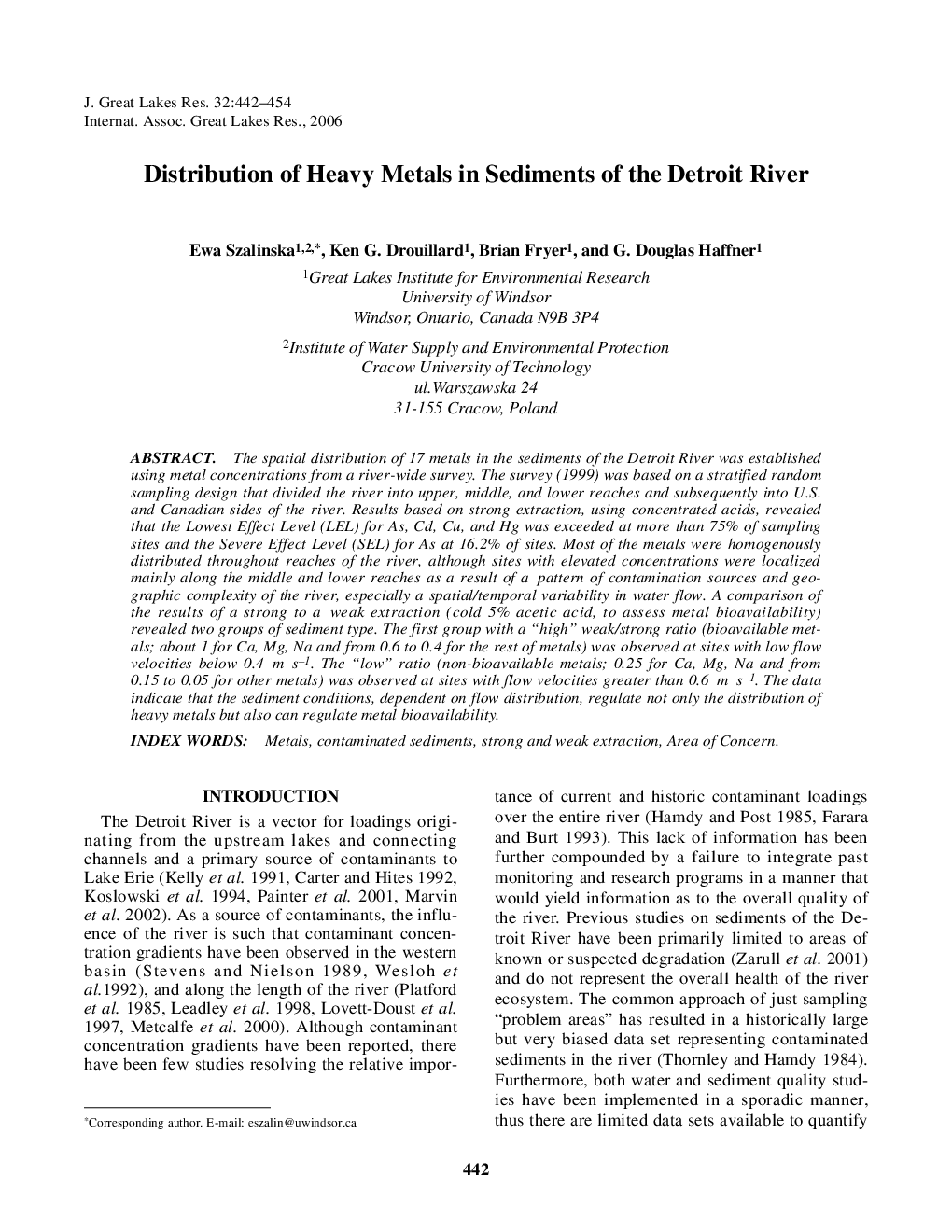| کد مقاله | کد نشریه | سال انتشار | مقاله انگلیسی | نسخه تمام متن |
|---|---|---|---|---|
| 4399495 | 1306755 | 2006 | 13 صفحه PDF | دانلود رایگان |
عنوان انگلیسی مقاله ISI
Distribution of Heavy Metals in Sediments of the Detroit River
دانلود مقاله + سفارش ترجمه
دانلود مقاله ISI انگلیسی
رایگان برای ایرانیان
موضوعات مرتبط
مهندسی و علوم پایه
علوم زمین و سیارات
علوم زمین و سیاره ای (عمومی)
پیش نمایش صفحه اول مقاله

چکیده انگلیسی
The spatial distribution of 17 metals in the sediments of the Detroit River was established using metal concentrations from a river-wide survey. The survey (1999) was based on a stratified random sampling design that divided the river into upper, middle, and lower reaches and subsequently into U.S. and Canadian sides of the river. Results based on strong extraction, using concentrated acids, revealed that the Lowest Effect Level (LEL) for As, Cd, Cu, and Hg was exceeded at more than 75% of sampling sites and the Severe Effect Level (SEL) for As at 16.2% of sites. Most of the metals were homogenously distributed throughout reaches of the river, although sites with elevated concentrations were localized mainly along the middle and lower reaches as a result of a pattern of contamination sources and geographic complexity of the river, especially a spatial/temporal variability in water flow. A comparison of the results of a strong to a weak extraction (cold 5% acetic acid, to assess metal bioavailability) revealed two groups of sediment type. The first group with a “high” weak/strong ratio (bioavailable metals; about 1 for Ca, Mg, Na and from 0.6 to 0.4 for the rest of metals) was observed at sites with low flow velocities below 0.4 m sâ1. The “low” ratio (non-bioavailable metals; 0.25 for Ca, Mg, Na and from 0.15 to 0.05 for other metals) was observed at sites with flow velocities greater than 0.6 m sâ1. The data indicate that the sediment conditions, dependent on flow distribution, regulate not only the distribution of heavy metals but also can regulate metal bioavailability.
ناشر
Database: Elsevier - ScienceDirect (ساینس دایرکت)
Journal: Journal of Great Lakes Research - Volume 32, Issue 3, 2006, Pages 442-454
Journal: Journal of Great Lakes Research - Volume 32, Issue 3, 2006, Pages 442-454
نویسندگان
Ewa Szalinska, Ken G. Drouillard, Brian Fryer, G. Douglas Haffner,